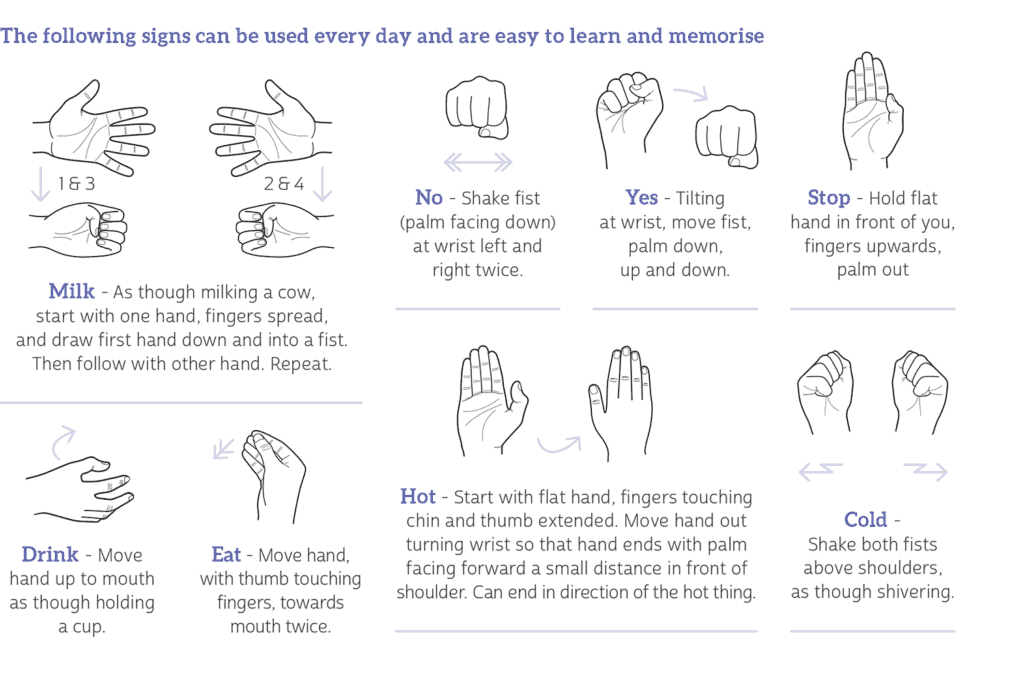Ever wondered what your baby wants, what they are thinking about, or why they are throwing a tantrum? Just because your baby is not talking yet doesn’t mean you can’t communicate.
We all hate seeing our kids unhappy, and when little ones are too young to speak they often throw tantrums because they can’t communicate their needs or wants. Research shows that the level of frustration children
feel diminishes significantly when they can tell you what they want. In recent years, more and more parents are turning to baby sign language to support communication with their preverbal kids. While you can start using signs at any age, the best time is when your baby begins to interact, between the age of six to nine months.
In Australia, the signs are adopted from AUSLAN (which stands for AUStralian Sign LANguage). We use AUSLAN with infants, even if the intention is not to continue signing after the child begins to articulate themselves. AUSLAN is nationally recognised and used within many childcare centres, and of course by sign dependent Australians. By choosing to learn AUSLAN, even at the Baby Sign level, your child learns to communicate with other AUSLAN users. This form of communication not only helps your child, it can also support the development of friendships with other AUSLAN users such as a deaf child at childcare or school.
How to Get Started:
1. Pick 3 – 5 signs. The most common signs to start with are MILK, MORE, and EAT.
2. Use the signs regularly. For example, when you nurse or give your baby a bottle, ask “Do you want some milk?” and sign MILK. Then, every time you talk about milk, use the sign.
3. As your child learns the signs and begins to sign back, start adding new signs.
4. Be patient. It will take time to teach your baby how to sign, but they can recognise the signs long before they can make them. For example, babies will often show their anticipation when you sign MILK by making specific sounds.
5. Learn more about signing with infants by taking classes, attending AUSLAN groups, and practising with friends and family.
No matter what you do, make it fun and enjoy the deep sense of connection you feel when you begin to have two-way conversations.






